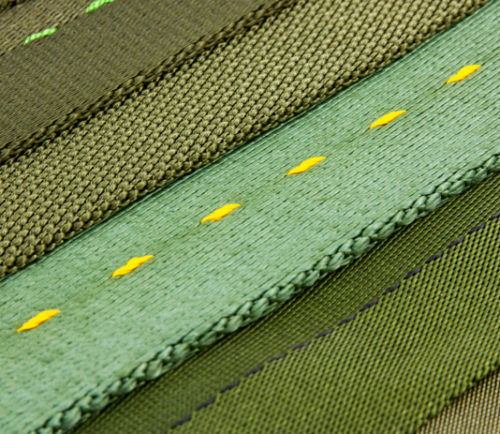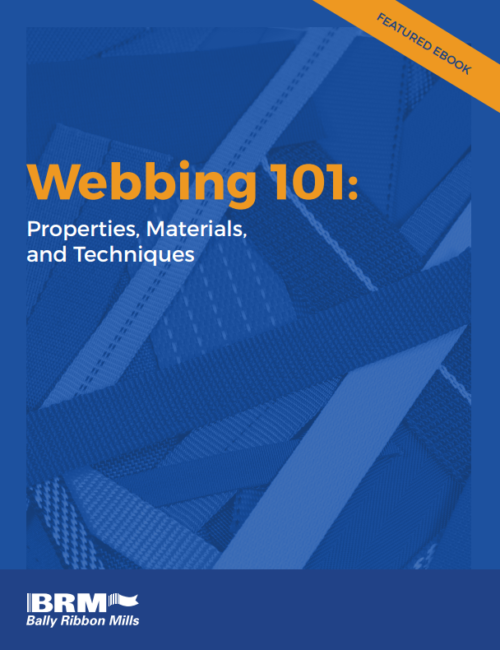Webbing is a strong woven fabric distinguishable by its assorted material compositions, strength differences, and widths. Appearing across a broad range of applications and industries, this strong material can be found in military gear (Mil-Spec), hiking and camping gear such as harnesses, and automotive safety features like seatbelts.
Once made of natural fibers such as cotton or flax, modern webbing is now usually made of fibers including strands of nylon or polyester woven on a loom to create flat strips. For extreme applications, it’s even available in high-strength materials such as Dyneema® and Kevlar®.
Types and Properties of Webbing
There are two basic types, identifiable by their shape and distinct physical properties:
- Flat (or solid) – Fibers solidly woven to create a flat surface.
Properties: Available in different breaking strengths, this style can carry out a number of basic applications. While the flat shape is well suited for applications in which material is sewn directly into a larger product, it can be susceptible to abrasion due to its stiffer nature in comparison to tubular webbing.
- Tubular – Generally thicker, this type is known to be more flexible than flat webbing.
Properties: Soft and pliable, this style allows for a variety of uses in comparison to its flat counterpart. It is also less susceptible to wear and tear, and is able to handle dynamic functions, such as holding knots.
Applications
Webbing is an adaptable component that appears in a diverse range of applications. Examples of common industries and specific uses include:
- Military – Specialized Mil-Spec and PIA-Spec (Parachute Industry Association) narrow webbing is manufactured as Class 1 (critical use, shuttle loom) or Class 1a (critical use, shuttleless / needle loom) to deliver payloads safely and reliably.
- Aerospace – High strength specialty webbing appears in parachutes, flight suits, seat belts, cargo netting reinforcement, and crew safety components.
- Safety – Applications such as chin and shoulder straps, lap belts, harnesses, binding tapes, and shock absorbing webbing enables civilian safety.
- Commercial – Backpack straps and pet leashes are examples of everyday commercial applications.
About Bally Ribbon Mills
With almost a century of experience designing, developing, and manufacturing, Bally Ribbon Mills can meet all of your webbing needs, from everyday applications to highly-specialized Mil-Spec and PIA-Spec components. Our team works tirelessly to ensure we are an industry leader among specialty textiles.
 To learn more, download our guide, Webbing 101: Properties, Materials, and Techniques today.
To learn more, download our guide, Webbing 101: Properties, Materials, and Techniques today.






